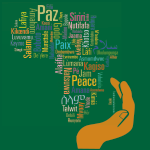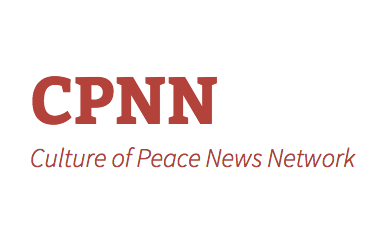International Day of Peace
According to our survey of the Internet there was an increase in participation in the International Day of Peace this year. This was true in all regions of the world except for Africa and the Arab and Middle Eastern States.
There were more actions in Russia and the Ukraine, especially in schools and universities, but they many were greatly complicated by the war. Most simply wished for peace, often expressed by cutting paper doves or origami and hanging them for all to view or giving them to people. But many other actions explicitly supported the soldiers on their side of the war. In the events in schools of the Ukraine, many called for victory. And some events in schools of Russia were carried out by army representatives recruiting for the war. Since criticism of their war effort is forbidden, it could not be directly expressed on Russian websites. However, in a few cases, it was indirectly expressed in the form of anti-war cartoons that we have reproduced.
As usual, the greatest number of actions took place in Europe. In France, thanks to the mobilization by Mouvement de la Paix and militant trade unions, there were actions in half of the one hundred departments of the country bearing the multi-colored flag of peace. In Belgium, most towns and cities took part in the action of raising the peace flag above the town hall. There were actions in 42 towns and cities of Italy this year. Especially touching was the Italian school that planted a cherry tree in memory of their favorite bear who recently died. The bear was named “Black Cherry” because she was especially fond of this fruit. And especially unusual was the football tournament in the Rebibbia women’s prison near Rome. The director of the prison said “We wanted to celebrate the International Day of Peace through sport, which has always been fertile ground for exalting the values of solidarity, fairness and respect for others.”
Also as usual, the next largest mobilization was in North America, involving 43 of the 50 United States and 4 Canadian provinces. Often, an entire city was mobilized, as was the case in Chicago, Boston, Philadelphia and Montreal. The United Nations devoted the day to a program involving youth from around the world and their contemporary culture. In his annual message, the UN Secretary General Antonio Guterres referred to the deadly fires, raging floods and soaring temperatures around the world and called for action to “end the war on our planet and its natural gifts.”
There was a great increase in actions this year in Asia and the Pacific. This was especially evident in Japan, where there were 28 actions, including 13 where high schools participated in a project to draw large-scale calligraphy for peace. In India and Nepal, we found 17 actions carried out by a variety of civil society organizations including Scouts and Guides, Lions Club and Rotary, as well as schools and universities.
The greatest increase in actions this year was in Latin America. This included 28 actions in Brazil, 15 in Mexico and 14 in Argentina, as well as action in 14 other countries. In 10 of these countries, actions were carried out at a government level. At the level of municipal authorities: Esquel, Mendoza and Puerto Genera San Martín in Argentina; Campo Grande, Guarulhos, Juazeiro and Ourinhos in Brazil; Medellin and Popayan in Colombia; Holguin in Cuba; Quito in Ecuador; and provincial authorities in La Altagracia, Dominican Republic and Merida and Queretero in Mexico. National government authorities were involved in Mexico, Panama, Paraguay and Venezuela.
There were fewer actions in Africa, 59 this year compared to 74 last year. In the states of central Africa torn by conflict and trying to separate from European neo-colonialism, the occasion was used to call for dialogue and non-violence. Actions in this regard took place in Burkina Faso, Cameroon, Central African Republic, Chad, Democratic Republic of Congo, Gabon, Mali, Niger, Nigeria, South Sudan and Togo. Angola took the occasion of the International Day of Peace to announce the third edition of the Pan-African Forum for the Culture of Peace that will take place later this year. Of special importance, given the vulnerability of Africa to the effects of global warming, was the initiative for planting of trees in Kenya.
There were fewer actions in Arab States and the Middle East this year, but the good news is the increased dominance of the voice of women. In Kuwait, The Women’s Institute for Development and Peace used the occasion of Peace Day to announce the formation of an Arab Women’s Network for Peace. And in Syria, the office of the Kurdistan Women’s Union hosted a dialogue session for the International Day of Peace calling for an end to violence and armament and for a comprehensive and just political solution that saisfies all parties in Syria.
In addition to the actions listed above, there were some virtual events on an international scale, including the following:
- Women as Powerful Agents of Transformation for Peace
- Peace One Day
- Peace Education Day
- Service Civil International: The many ways of peace and antimilitarism
- NoWar2023 Conference: Nonviolent Resistance to Militarism
Fortunately, the last two events specifically attacked the culture of war, unlike most events that took place this year for the International Day of Peace. This is important, as pointed out in our most recent blog.
GLOBAL
What has happened this year: International Day of Peace |
UNITED STATES AND CANADA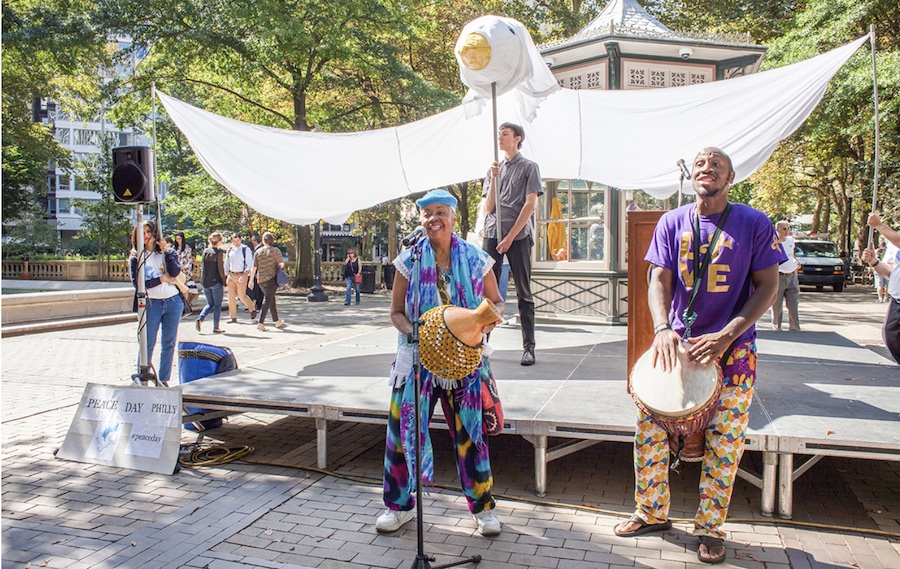
United States and Canada: International Day of Peace |
EUROPE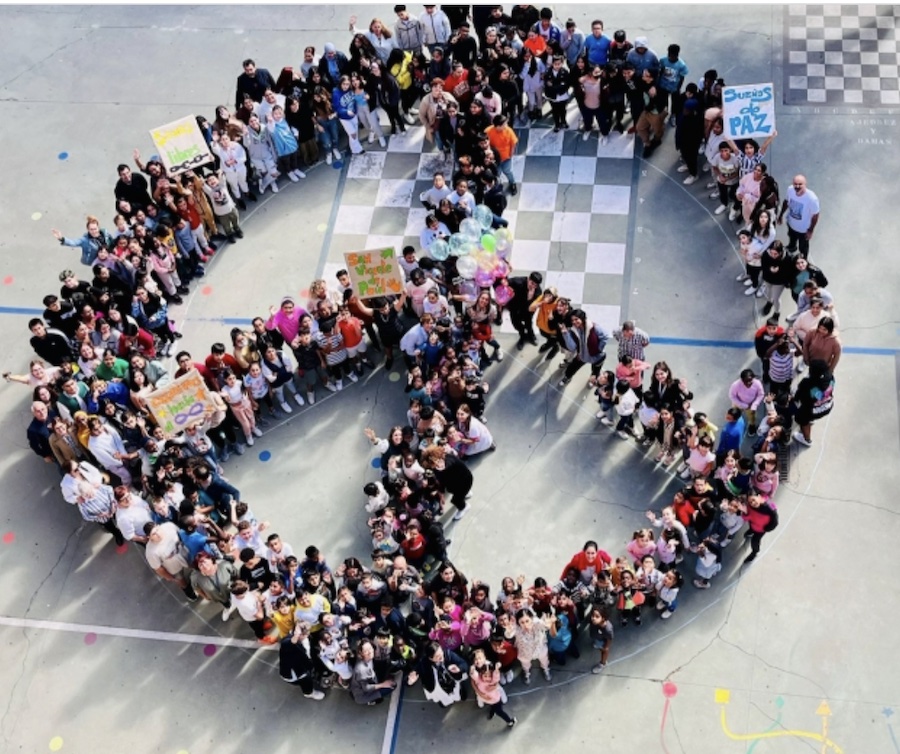
Europe: International Day of Peace |
ASIA AND PACIFIC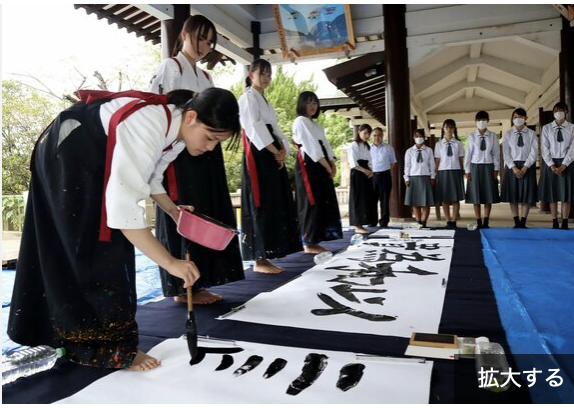
|
EX-SOVIET COUNTRIES
|
ARAB STATES AND MIDDLE EAST
Arab States And Middle East: International Day of Peace |
LATIN AMERICA AND CARIBBEAN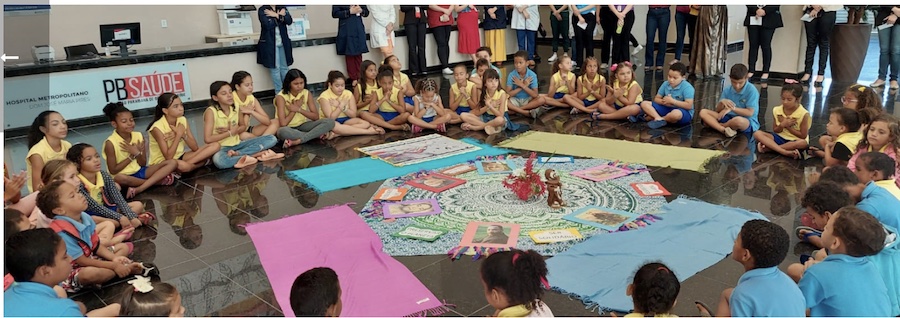
|
AFRICA
|
